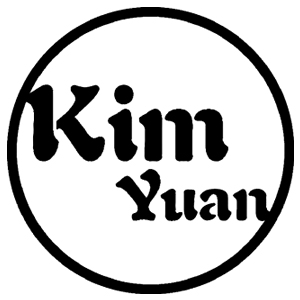HOW TO CHOOSE THE RIGHT TIG GLOVES
TIG welders are about as passionate of their TIG gloves as they are about the trucks they drive and the beer they drink. And when it comes to their TIG glove, they’re just as outspoken.
With the broad spectrum of fine detail that TIG welders often encounter, the requirement for a balance of protection both from heat and UV rays, dexterity, durability and feel is a necessity of the most discerning TIG welder. Needless to say, TIG welders look for that perfect glove that provides adequate protection while allowing the dexterity they need for executing the perfect weld. When it comes to TIG gloves there is a delicate balance between the level of touch and sensitivity needed and the protection from heat buildup.
KimYuan has traveled the world to source the finest hides from the most discerning ranchers to craft KimYuan TIG gloves. TIG gloves with softer leather provide the right touch, sensitivity and dexterity required for controlling the torch and filler rod to execute that perfect row of dimes.
Here are some factors to consider when looking for the right TIG glove.
The Touch Needed for that Perfect Weld
With the balance of managing the torch and adding the filler material, the TIG welder relies on a delicate touch to glide the filler rod on the glove. TIG gloves generally are thinner and have more of a conforming feel to the hand to provide the welders with the dexterity and touch they require. Generally top grain Kidskin or Goatskin leathers or a reverse Deerskin leather offer the characteristics needed to maximize the welder’s sense of feel and dexterity.
Leather
With the balance of managing the torch and adding the filler material, the TIG welder relies on a delicate touch to glide the filler rod on the glove. TIG gloves generally are thinner and have more of a conforming feel to the hand to provide the welders with the dexterity and touch they require. Generally top grain Kidskin or Goatskin leathers or a reverse Deerskin leather offer the characteristics needed to maximize the welder’s sense of feel and dexterity.
Reverse Deerskin is by far the thinnest leather and delivers a tremendous sense of touch yet is not great for handling materials just because, by nature, the leather is so thin. Top grain Pigskin is a bit thicker yet is still a great, and popular TIG glove as it too offers good sensitivity. Pigskin is also naturally resistant to oils and water yet is slightly thicker than Deerskin or Kidskin.
Insulation and Radiant Heat
Because TIG welders require such a sense of feel and dexterity, TIG gloves are not insulated with a fleece or foam type of material. If you need some level of insulation, a glove lined with a Dupont™ Kevlar® or a Para-Aramid material provide some heat resistance and will not bulk up the glove. Or, a thicker leather like Pigskin can assist in providing some level of natural insulation.
If you are doing a lot of production type TIG welding for hours on end and are looking for a glove with some insulation to reduce the build up of radiant heat, you may look for a thinner, unlined MIG glove as an option.
Cuff or No Cuff
While TIG welding is a more precise weld and does not create the sparks and spatter like MIG welding, you still want to have some protection above your forearm; or above your wrist. Many TIG gloves are offered in both 2” and 4” cuffs. With the cuff there is no right or wrong answer, it’s a personal preference.
Cut Protection
We are seeing more welders using TIG gloves like a multi-use glove when handling materials and welding. Cut resistance is delivered with either a Dupont ™ Kevlar® or Para-Aramid lining and the gloves should have the ANSI cut resistant shield on the gloves to indicate the cut rating. These cut resistant linings also provide some level of heat protection.
UV Exposure
So, UV exposure is often overlooked but is a topic we at Tillman take very seriously. Essentially, UV radiation created with TIG welding will burn unprotected skin, just like UV rays from sunlight as well as the UV rays reflected from metal surfaces, walls, and ceilings. UV protection for the hands is just as important as it is for the arms, throat and any other part of the body, but often overlooked because few people have ever sunburned their hands. Bottom line, wear gloves, a shirt or wear sleeves to protect you from these harmful UV rays and keeping you from getting a “welders tan”. Remember, long-term exposure to UV radiation can cause skin cancer.
When it comes to finding the right TIG glove, it is completely up to the welder. Sense of touch, heat protection, cut protection and cuff length are just a few factors to think about when choosing. After reading this, you’ll be a pro on what to look for when choosing the right TIG glove.
Heated Gloves Battery Powered Winter Ski Snowboarding Heated Gloves Rechargeable
Good Quality Factory Directly Long Brown Cow Split Layer Welding Gloves for Welder's Hand Protection
$26.00
High Visibility Welding Gloves With Reflective Strip Heat and Fire Resistant Reflective Cut Resistant Safety Gloves
$30.00
Comfortable Men Guide Cold Weather Premium Winter Sports Gloves for Skiing/Snowboarding/Cycling/Running/Ice Hockey
Original price was: $21.50.$18.50Current price is: $18.50.
Best Price of KIM YUAN Winter Warm Gloves Cycling Motorcycle Gloves for Winter Outdoor Sports
$26.40
Good Quality Hot Sale Cow Leather Oven Gloves Industrial Gloves Tig Welding Gloves
$25.99








